The Raystorm Pro maintains XSPC’s aesthetic but yet manages to give a “fresh updated look” vs the original:
The mount now appears more integrated and flows with the design better. It’s also metal which we prefer over the old standard plastic mount which could bend under extreme pressure. Even the top of the block is now copper vs acetal meaning that fitting threads are far less likely to be stripped:
The only plastic is now the four “windows” that get lit up by LEDs. Overall we love the upgrade in style points and we love that XSPC were able to keep their existing design language so that this will match their existing GPU/motherboard and RAM blocks:
Overall this is the classiest and most high quality block we’ve seen from XSPC.
As usual even when the plastic wrapper is removed there is an additional plastic layer protecting the base – this must be removed before use:
The block is bowed slightly as you would expect:
Just like the original raystorm the mount bracket simply lifts off – sadly it is not attached to the block. This is not a problem at all, simply a trivial annoyance that it’s loose during mounting. Of course once fittings are added they may be wide enough to keep it in place, but we’d still prefer it to be physically attached to the block at all times.
The underside shows that the LEDs must be fitted on two opposite sides to get the full lighting effect. This may restrict the orientation possibilities of the block depending on how much clearance is around it.
The remaining copper core has a hidden marker for the input port so that you don’t attempt to put it back together backwards:
Full metal tops to blocks can provide a minor performance bump when they don’t affect the resulting bow. However to do so they need airflow – this copper top however is shielded from airflow by the mounting bracket. There might therefore be a very slight performance gain to be had on loops with high coolant deltas or high airflow by applying TIM in between this copper top and the mounting bracket.
Observant readers may notice something a little funky with the screw threads:
Like some other blocks and the older raystorm block before the fitting threads are not fully threaded all the way down. On the input port – only about 2 threads are complete which result in an increased likelihood of stripping. As mentioned before though the use of copper vs acetal is an improvement versus the old design. However we’d still like to see another full thread or two. The slight impact on flow is worth the peace of mind.
After testing the block was opened and compared to the original raystorm (right):
As can be seen the block internals are almost identical. A stainless steel jetplate is still used to provide localized flow increases as well as bow. The copper base channel area machining has changed. It would be interesting how much of any performance gain is from the block itself versus the change in mount.
Well enough talk about what performance *might* be, let’s take a look at what it is!








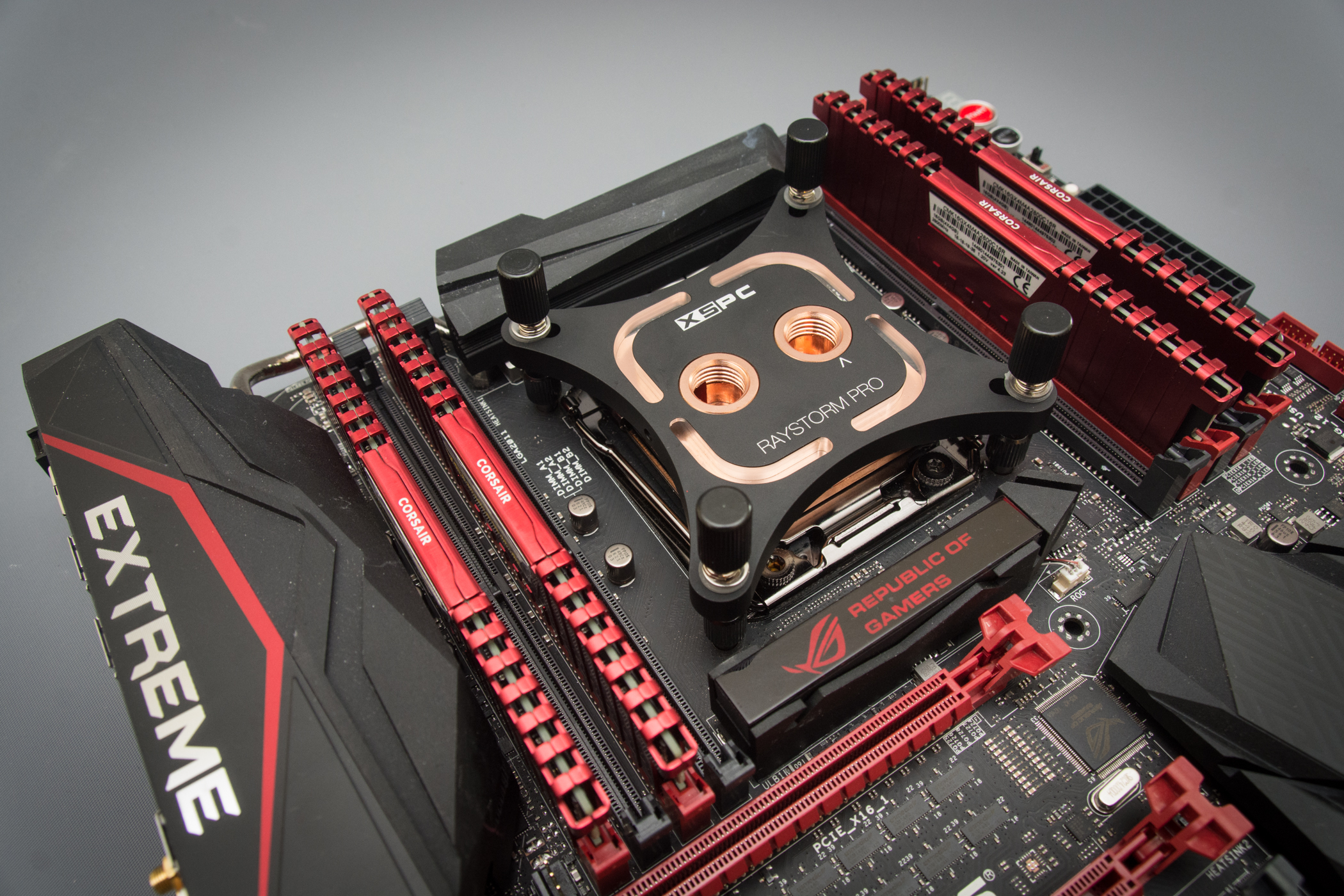
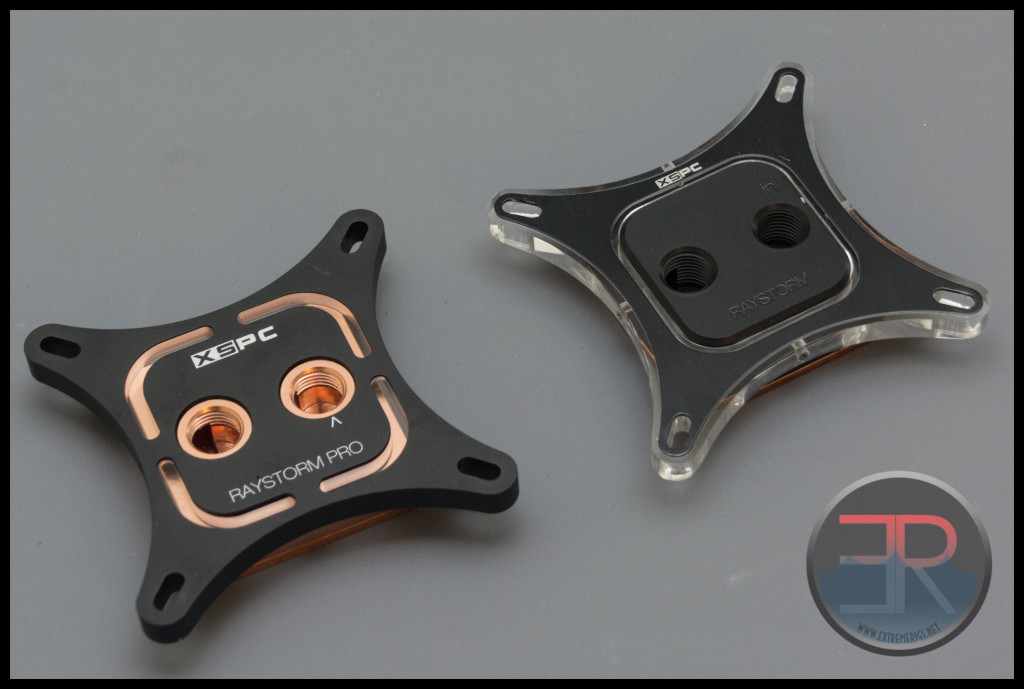
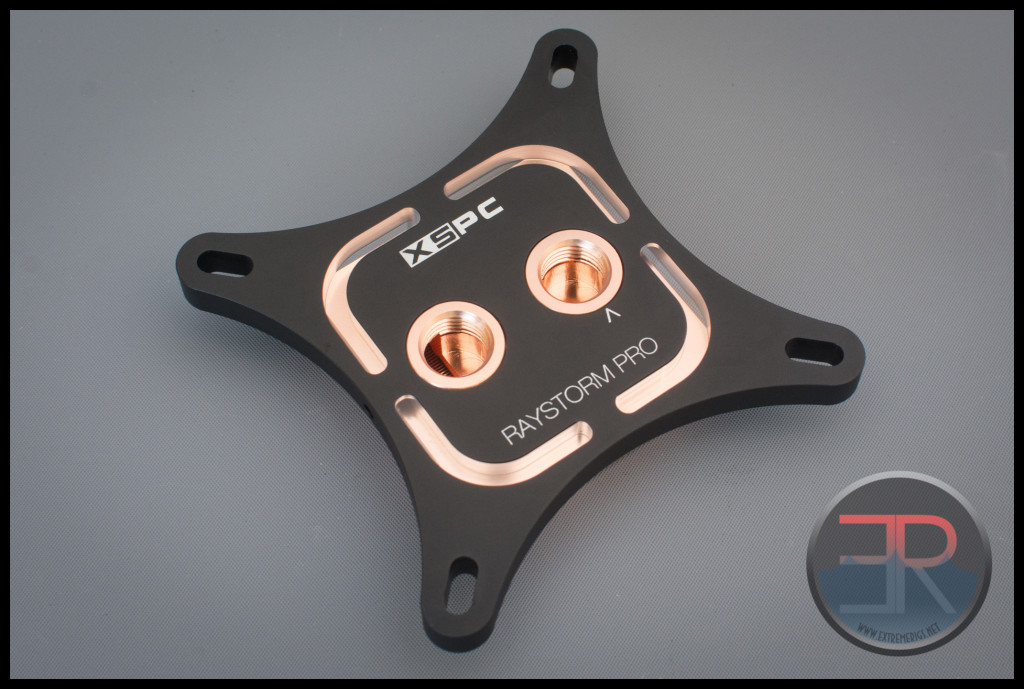
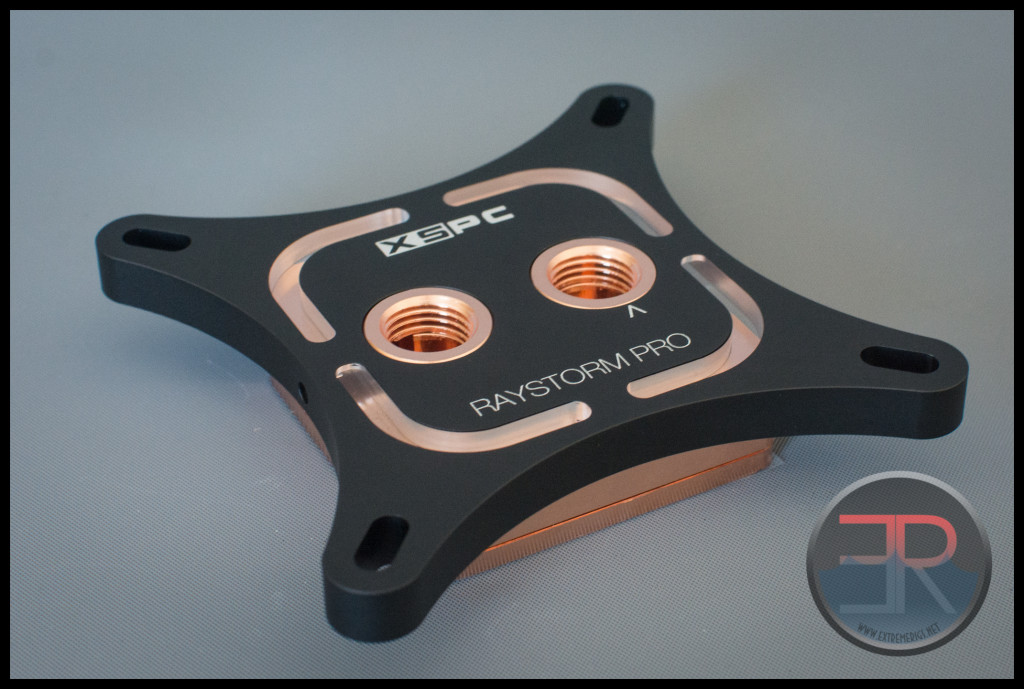
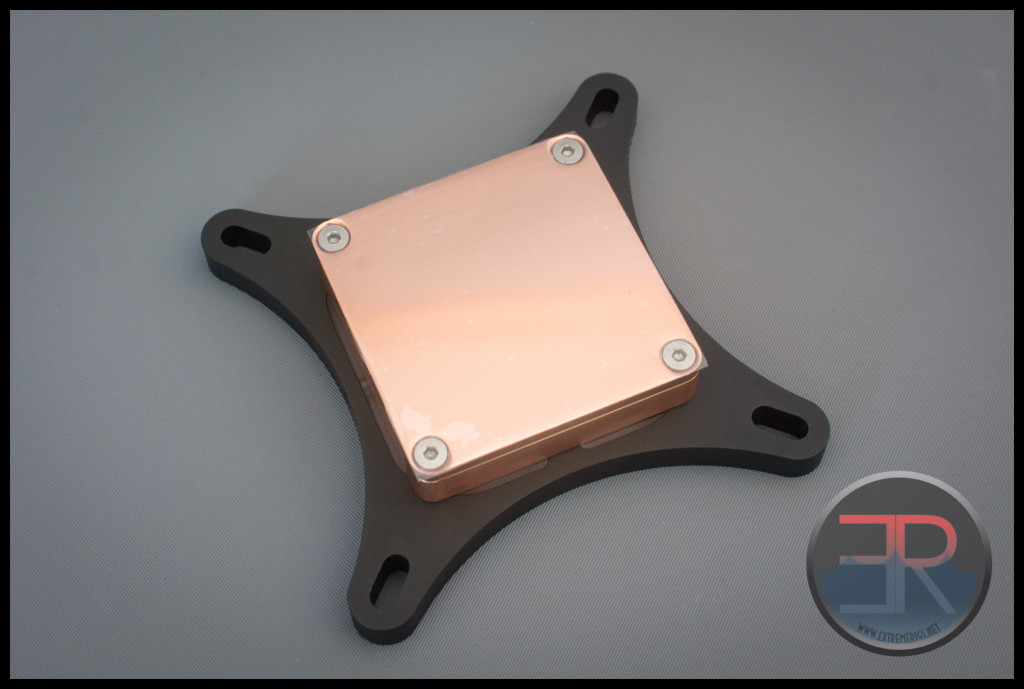
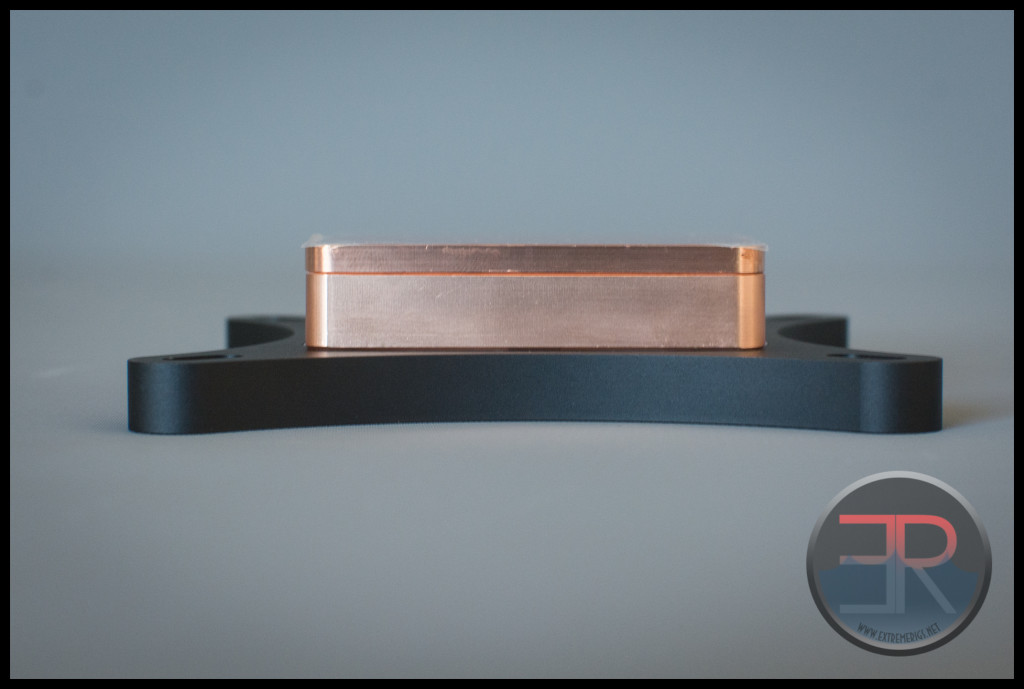
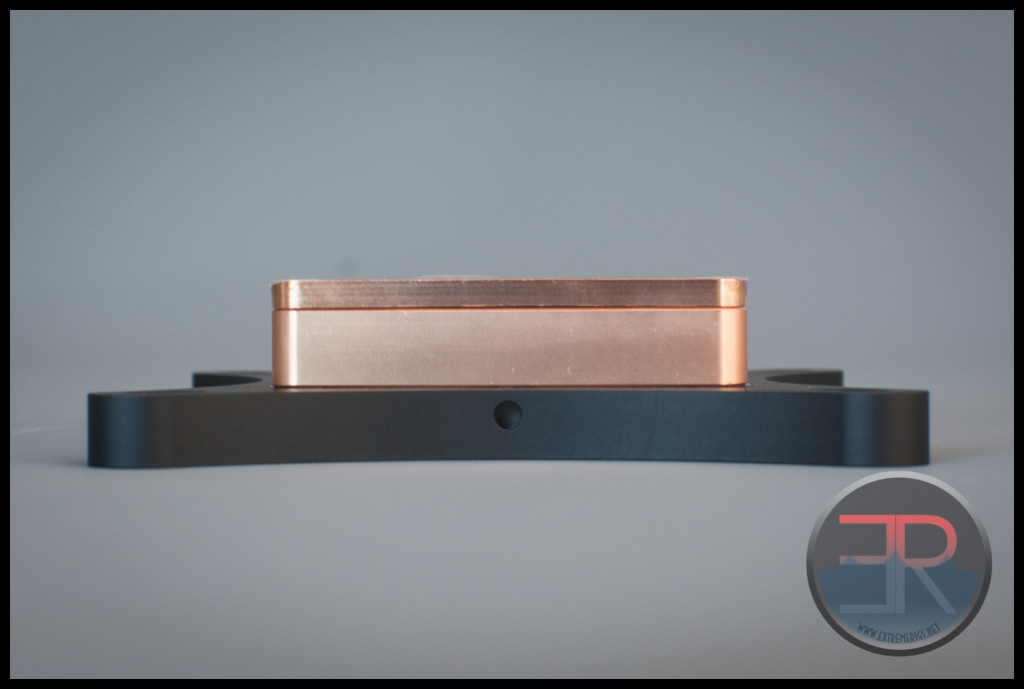
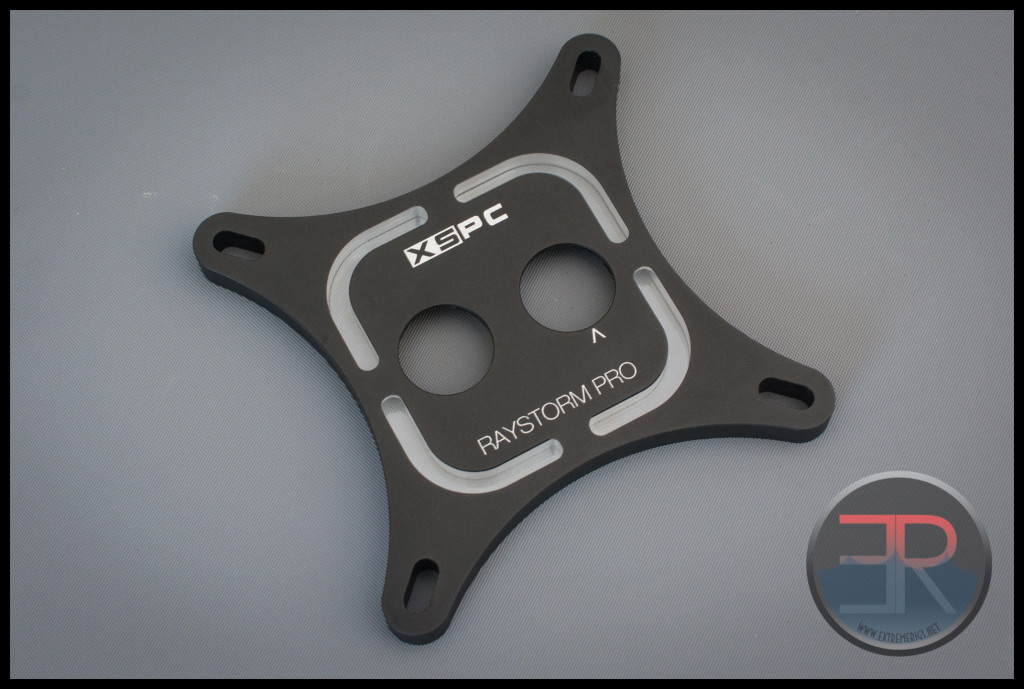
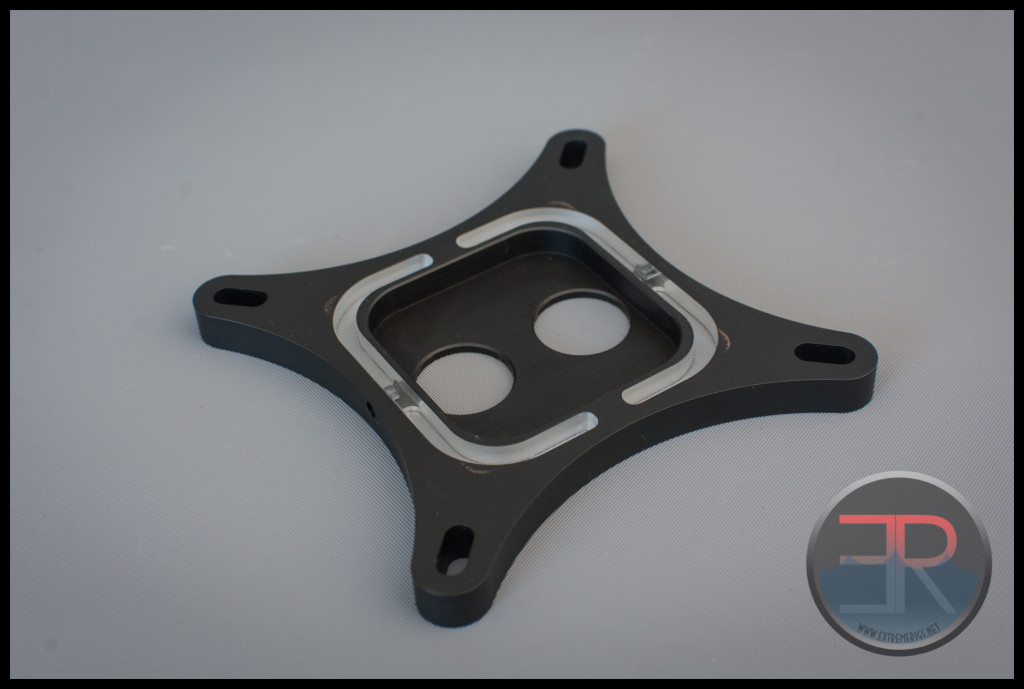
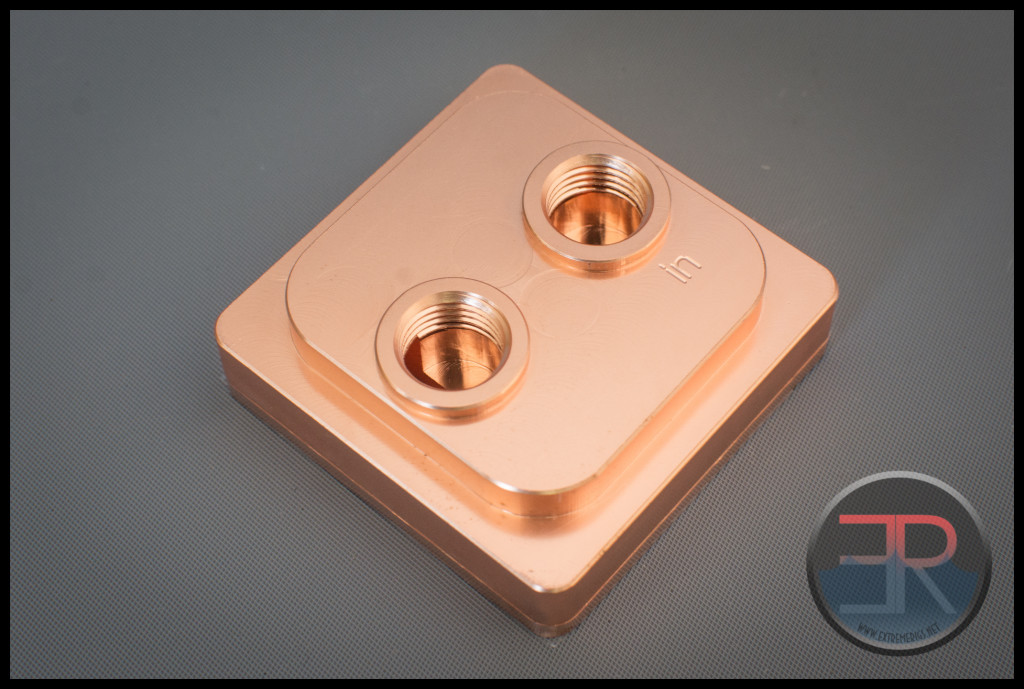
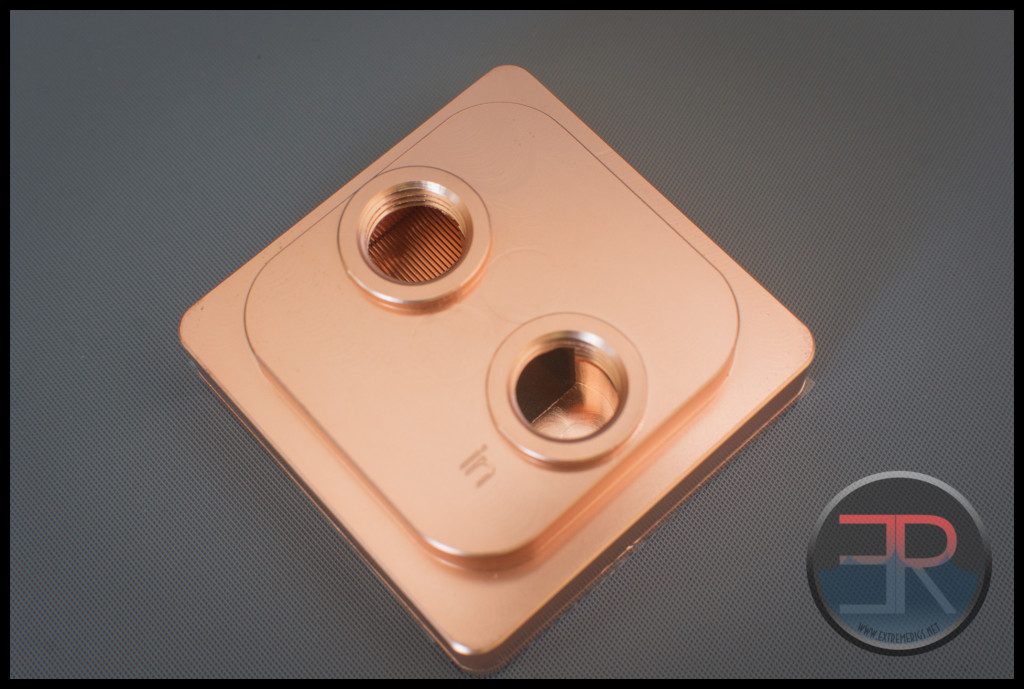
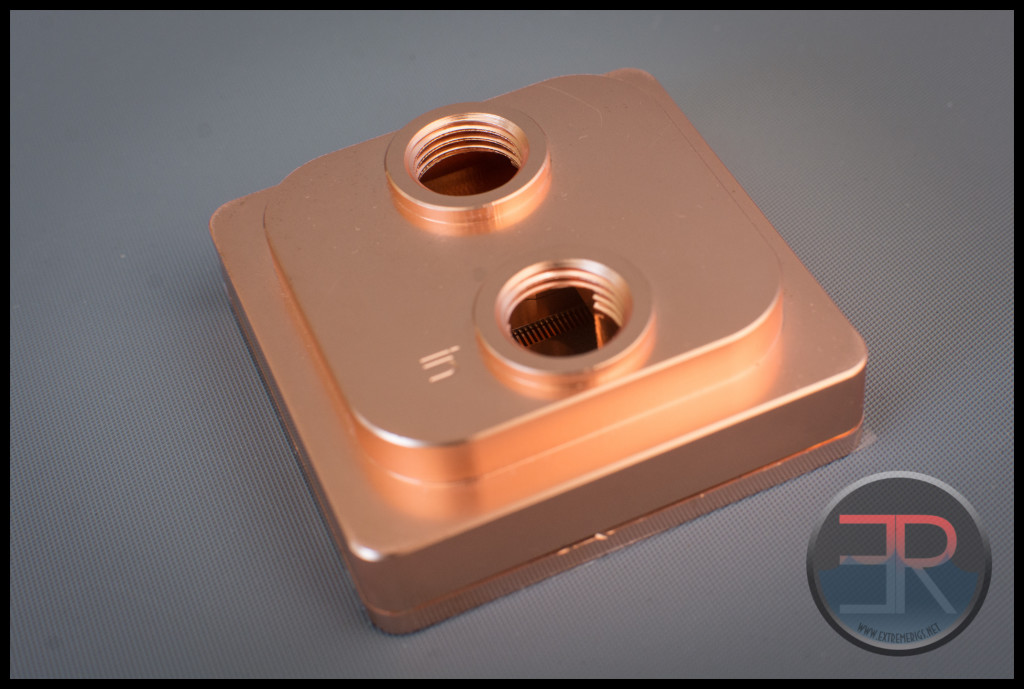
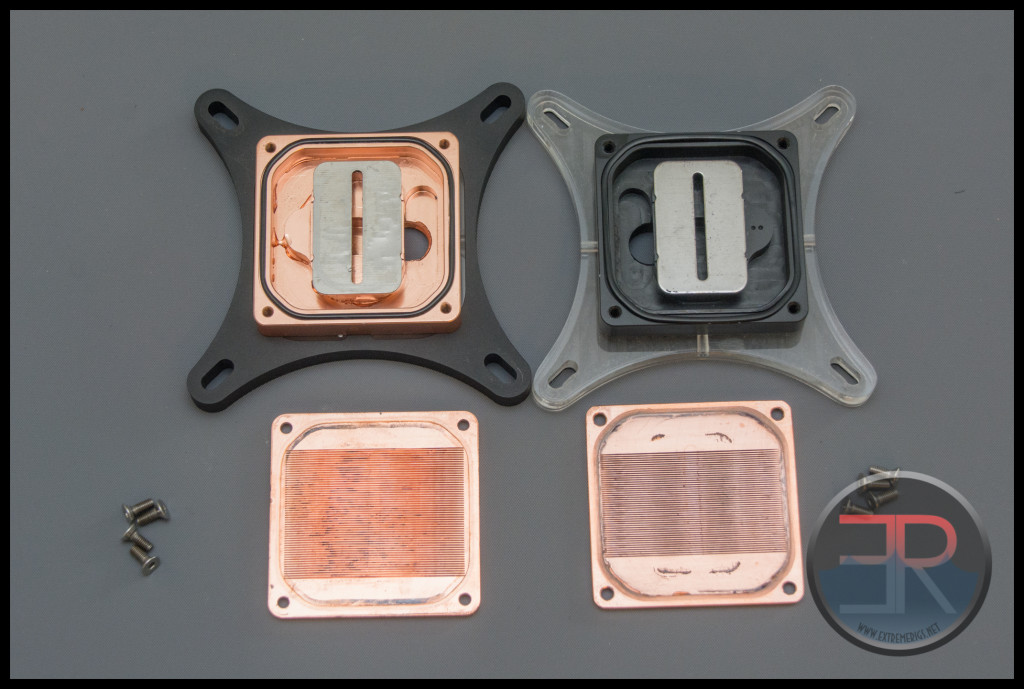
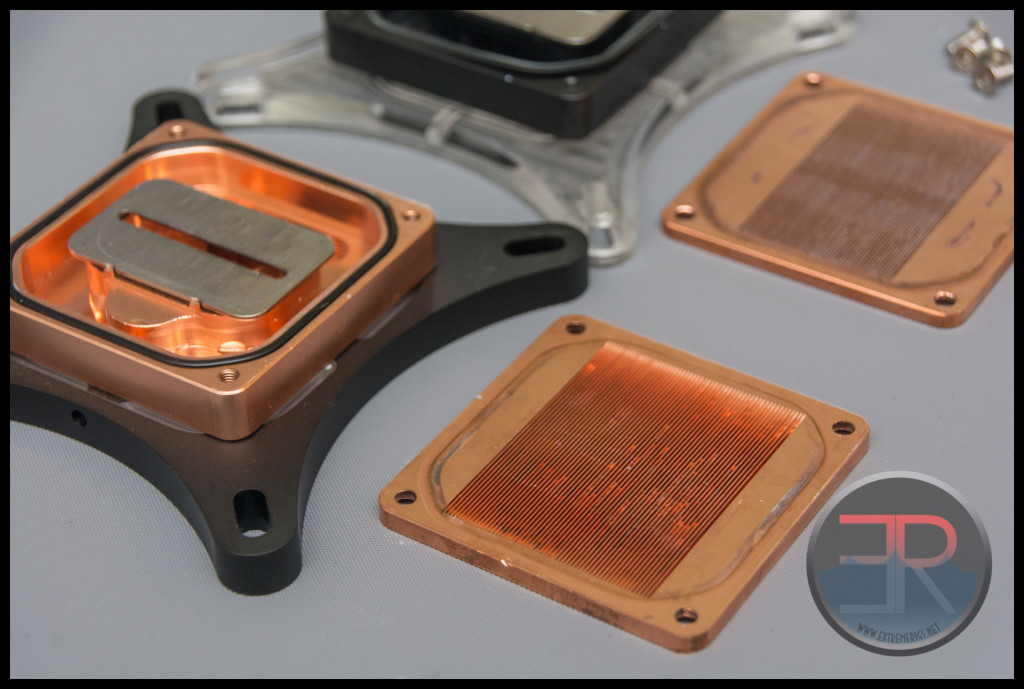



Hi,
first, thanks for the great review and tests you made. I´ve got one question because i dont understand really what to do.
What you mean with regular and goofy? The Innerplate (silver) turning? Or do you mean the whole CPU cooler turn about 90 degrees?
Hope you could help me.
Regards Chris
Hi Chris – normally I mean the entire block rotating 90 degrees. In the case of XSPC the outer aluminum bracket orientation doesn’t matter. So yes if you want you can just rotate the inner copper block where all the cooling is done. It’s all about lining up the microchannels of the block and the bow of the block in the best possible way with the CPU.
So it’s a microchannel… will this mean that we’re restricted in some way on where the I/O tubings will end up at?
Not sure exactly what you mean. The micro channels and jetplate in the block are fairly typical for any modern cpu block, as are the port locations?
So goofy is better with this block on x99?
Thanks
Comments are closed.